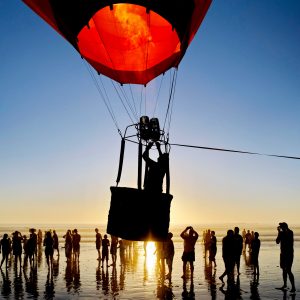8.5 False Memory
Some memory errors are so “large” that they almost belong in a class of their own: false memories. Back in the early 1990s a pattern emerged whereby people would go into therapy for depression and other everyday problems, but over the course of the therapy develop memories for violent and horrible victimhood (Loftus & Ketcham, 1994). These patients’ therapists claimed that the patients were recovering genuine memories of real childhood abuse, buried deep in their minds for years or even decades. But some experimental psychologists believed that the memories were instead likely to be false—created in therapy. These researchers then set out to see whether it would indeed be possible for wholly false memories to be created by procedures similar to those used in these patients’ therapy.
In early false memory studies, undergraduate subjects’ family members were recruited to provide events from the students’ lives. The student subjects were told that the researchers had talked to their family members and learned about four different events from their childhoods. The researchers asked if the now undergraduate students remembered each of these four events—introduced via short hints. The subjects were asked to write about each of the four events in a booklet and then were interviewed two separate times. The trick was that one of the events came from the researchers rather than the family (and the family had actually assured the researchers that this event had not happened to the subject). In the first such study, this researcher-introduced event was a story about being lost in a shopping mall and rescued by an older adult. In this study, after just being asked whether they remembered these events occurring on three separate occasions, a quarter of subjects came to believe that they had indeed been lost in the mall (Loftus & Pickrell, 1995). In subsequent studies, similar procedures were used to get subjects to believe that they nearly drowned and had been rescued by a lifeguard, or that they had spilled punch on the bride’s parents at a family wedding, or that they had been attacked by a vicious animal as a child, among other events (Heaps & Nash, 1999; Hyman, Husband, & Billings, 1995; Porter, Yuille, & Lehman, 1999).
More recent false memory studies have used a variety of different manipulations to produce false memories in substantial minorities and even occasional majorities of manipulated subjects (Braun, Ellis, & Loftus, 2002; Lindsay, Hagen, Read, Wade, & Garry, 2004; Mazzoni, Loftus, Seitz, & Lynn, 1999; Seamon, Philbin, & Harrison, 2006; Wade, Garry, Read, & Lindsay, 2002). For example, one group of researchers used a mock-advertising study, wherein subjects were asked to review (fake) advertisements for Disney vacations, to convince subjects that they had once met the character Bugs Bunny at Disneyland—an impossible false memory because Bugs is a Warner Brothers character (Braun et al., 2002). Another group of researchers photoshopped childhood photographs of their subjects into a hot air balloon picture and then asked the subjects to try to remember and describe their hot air balloon experience (Wade et al., 2002). Other researchers gave subjects unmanipulated class photographs from their childhoods along with a fake story about a class prank, and thus enhanced the likelihood that subjects would falsely remember the prank (Lindsay et al., 2004).

Using a false feedback manipulation, we have been able to persuade subjects to falsely remember having a variety of childhood experiences. In these studies, subjects are told (falsely) that a powerful computer system has analyzed questionnaires that they completed previously and has concluded that they had a particular experience years earlier. Subjects apparently believe what the computer says about them and adjust their memories to match this new information. A variety of different false memories have been implanted in this way. In some studies, subjects are told they once got sick on a particular food (Bernstein, Laney, Morris, & Loftus, 2005). These memories can then spill out into other aspects of subjects’ lives, such that they often become less interested in eating that food in the future (Bernstein & Loftus, 2009b). Other false memories implanted with this methodology include having an unpleasant experience with the character Pluto at Disneyland and witnessing physical violence between one’s parents (Berkowitz, Laney, Morris, Garry, & Loftus, 2008; Laney & Loftus, 2008).
Importantly, once these false memories are implanted—whether through complex methods or simple ones—it is extremely difficult to tell them apart from true memories (Bernstein & Loftus, 2009a; Laney & Loftus, 2008).
Conclusion
To conclude, eyewitness testimony is very powerful and convincing to jurors, even though it is not particularly reliable. Identification errors occur, and these errors can lead to people being falsely accused and even convicted. Likewise, eyewitness memory can be corrupted by leading questions, misinterpretations of events, conversations with co-witnesses, and their own expectations for what should have happened. People can even come to remember whole events that never occurred.
The problems with memory in the legal system are real. But what can we do to start to fix them? A number of specific recommendations have already been made, and many of these are in the process of being implemented (e.g., Steblay & Loftus, 2012; Technical Working Group for Eyewitness Evidence, 1999; Wells et al., 1998). Some of these recommendations are aimed at specific legal procedures, including when and how witnesses should be interviewed, and how lineups should be constructed and conducted. Other recommendations call for appropriate education (often in the form of expert witness testimony) to be provided to jury members and others tasked with assessing eyewitness memory. Eyewitness testimony can be of great value to the legal system, but decades of research now argues that this testimony is often given far more weight than its accuracy justifies.

